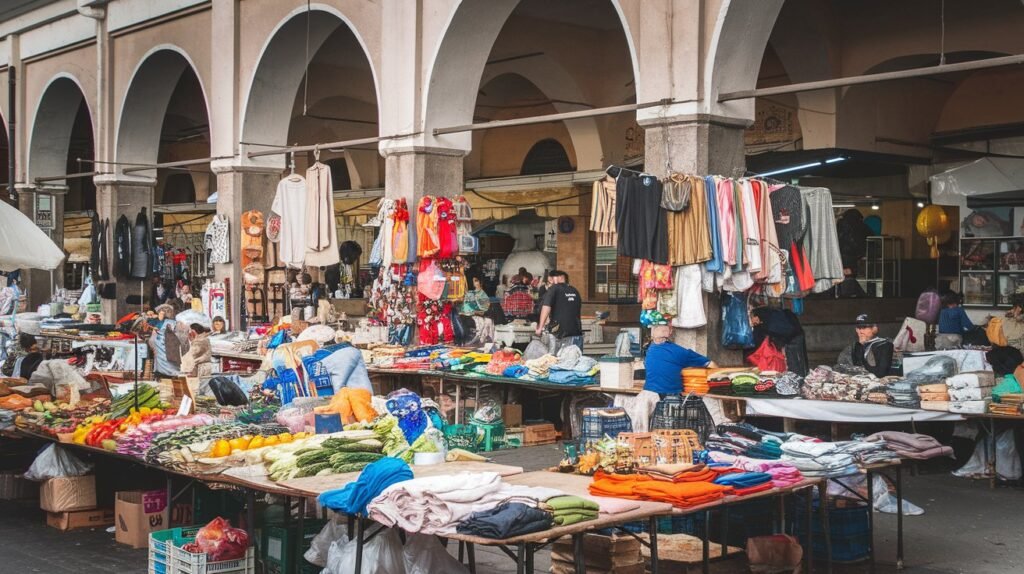Market Made Simple: What It Is, How It Works, and Why It Matters to You

Market is a word we hear every day. But do you really know what a market is? Don’t worry — we’ll explain it in a fun and simple way!
A market is like a big meeting place where people buy and sell things. It can be a real place, like a local food market, or it can be online, like Amazon. Markets help people find what they need and help sellers share what they have. Let’s explore the world of markets together!
What Is a Market? A Simple Answer for Everyone
A market is a place where people come together to buy and sell things. It can be food, clothes, toys, or even things like apps or music online. Some markets are outside, like the ones with colorful tents. Others are on your phone or computer.
When people go to a market, some of them are buyers and some are sellers. Buyers want to get things they need, like fruits or books. Sellers want to give those things to people and get money in return. This exchange is what makes a market work.
Not all markets are in the same shape or size. Some are tiny stalls in a small village. Some are big malls with many shops. And some are websites where you can shop anytime from anywhere. They all do the same job — helping people trade what they have for what they want.
How Markets Work: Buyers, Sellers, and Products
A market works like a big team game. Each person plays a special role to keep everything moving. The main people in a market are the buyers and the sellers. Buyers want to get things they need. Sellers offer those things, hoping someone will buy them.
Sellers bring products, which can be anything — like apples, books, or even games. These products are shared with people who want them. If the product is useful or fun, more people want to buy it. That’s how a market grows and gets busy.
Buyers look at the products and ask, “Is this a good deal?” If the price feels right, they buy it. If not, they may look somewhere else. This helps sellers think about better prices or making their products nicer. This back-and-forth helps the market stay fair and active.
Table of Contents
Why Markets Are Important in Everyday Life
Markets are a big part of our daily life, even if we don’t always notice them. Every time we shop, we use a market. It could be at a small shop near your house or on your phone when you buy something online. Markets help us get what we need and want.
They also help people earn money. Sellers in a market can be farmers, shopkeepers, or even artists selling handmade crafts. When you buy from them, they make money. This helps them take care of their families and grow their business.
Markets give us many choices. You can pick what color, size, or brand you like. This freedom to choose makes shopping fun and fair. It also helps businesses do better because they know they must give good products to win happy customers.
The Role of Demand and Supply in the Market
What Is Demand?
Demand means how much people want a product or service. If many people want it, demand is high.
- More demand can make prices go up.
- Less demand can make prices fall.
- Sellers watch demand to set smart prices.
What Is Supply?
Supply means how much of something sellers can give. If there is a lot of supply, prices may go down.
- High supply means more choices for buyers.
- Low supply can make things rare or costly.
- Sellers try to keep enough stock to match demand.
How Demand and Supply Work Together
Demand and supply must stay balanced. If one goes too high or low, the market can get unstable.
- When supply is more than demand, sellers may lower prices.
- When demand is more than supply, prices can rise.
- A good balance keeps the market fair and steady.
Market Examples Around the World You’ll Love
Markets are everywhere in the world, and each one is a little different. In some countries, markets are big and busy, while in others, they are small and quiet. Let’s take a look at some exciting market examples from different parts of the world!
In Thailand, you’ll find floating markets. These are markets set up on boats that travel along rivers. People sell fruits, snacks, and handmade goods from their boats, and shoppers pick what they want from the water. It’s a fun and unique way of shopping.
In Mexico, there are colorful markets called “mercados.” These markets have everything from fresh food to handmade pottery. Walking through these markets is an adventure. The smells, the sights, and the sounds make it an unforgettable experience.
In the United States, markets can be very different. Some are farmer’s markets, where you can buy fresh fruits and vegetables directly from farmers. Others are massive shopping malls with dozens of stores under one roof. No matter where you go, you’ll find different types of markets serving all sorts of needs.
Learning About Market Terms Without Getting Confused

Markets have many special words and terms. These words help us understand how everything works. But don’t worry! We’ll explain some of the most common ones in an easy way.
Supply and Demand are two of the most important terms in a market. Supply means how much of a product is available, and demand means how much people want that product. If many people want something, the price can go up because demand is high. If there is a lot of something but not many people want it, the price may go down.
Another important term is competition. This means that different sellers try to offer better products or prices to get your attention. If many sellers are in a market, they work harder to make their products attractive, which can be good for buyers.
Profit is a word you’ll hear a lot too. It’s the money a seller makes after they sell something. If a seller makes more money than they spent to get the product ready, that’s profit. Sellers try to make a profit, but they also want to give fair prices to customers so everyone wins.
How Markets Affect Prices and Your Pocket
The prices of things we buy can change a lot, and the market is one of the main reasons why. When we talk about prices, we often mean how much money something costs. The market helps decide if prices go up or down, depending on what people want and what’s available.
When a market has a lot of a certain product, like toys or clothes, but not many people want them, the price usually goes down. This is because sellers want to sell the items, so they offer lower prices to attract buyers. This is good for shoppers because they get to buy things for a cheaper price.
On the other hand, when something is in high demand, like the latest phone or a popular toy, the price can go up. Many people want it, but there might not be enough for everyone. So, sellers raise prices to make sure they get the most money from those who are willing to pay more.
Conclusion
Markets are an important part of our daily lives, and understanding how they work can help us make better choices when shopping. Whether you’re buying fruits at a local market or shopping for clothes online, markets bring buyers and sellers together in a way that makes it easy to get what we need. By knowing a little bit about how markets work, you can be smarter with your money and get good deals.
Remember, markets are all around us, and they affect the prices of the things we buy. By paying attention to supply, demand, and how prices change, we can make sure we’re always getting the best value for our money. Understanding markets doesn’t have to be hard—it’s something everyone can learn, no matter how old you are!
Recommended Blog For More Details
S&P stock market today
FAQs
Q: What is a market?
A: A market is a place where people buy and sell things. It can be a physical place like a market stall or an online store.
Q: Why do prices change in a market?
A: Prices change because of supply and demand. If more people want something, the price can go up. If there’s too much of something, the price may go down.
Q: What is supply and demand?
A: Supply is how much of a product is available. Demand is how much people want it. When demand is high, prices go up. When supply is high and demand is low, prices drop.




